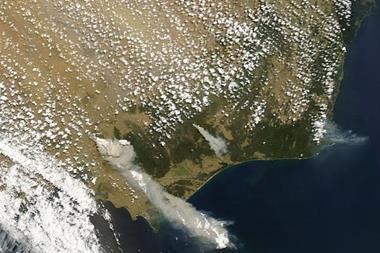It’s no use hoping in vain for the calls for rate increases to become a reality, warns Wilhelm Zeller
At last year’s Rendez-Vous in Monte Carlo, executives of some reinsurance companies expressed hopes of substantial rate increases. These high hopes were dashed at the 1 January 2010 renewals. Behind the softening market is excess capital and high capacity. Primary and reinsurer capital is nearly back to the levels of year-end 2007, when it hit its all-time peak. While the January renewals were generally orderly, and the level of pricing in aggregate is still adequate, the direction is clearly down.
In terms of price direction and price level, let alone geographic differences, the market is far from uniform. The starkest contrasts are between casualty and natural catastrophe lines of business, as well as between primary insurance and reinsurance players.
While there are many different areas of casualty, there is almost uniform agreement that this class of business is most under pressure, even more so at the primary level. Reduced investment income and the expectation of higher future inflation ought to be driving prices upward, especially in long-tail lines, where these parameters are more critical to economic success. The current economic climate in the world may be acting as a handbrake against getting this moving.
Guy Carpenter’s World Property Cat Reinsurance Rate on Line Index declined by ‘only’ 6% in nominal terms. However, Guy Carpenter interestingly added that, by applying the decreased modelling assumptions for some earthquake and windstorm perils retrospectively to 2009, the revised impact is a reduction of as much as 11% on average – nothing to brag about from the reinsurers’ point of view. Or is it a case of “let’s blindly follow the models” – this time downwards?
So what will all of that mean for the future? There will be winners and losers, and the winners will be those who pay attention to the key indicators. I would strongly distinguish between, on the one hand, the longer-tail casualty companies and the shorter-tail property writers, and on the other, pro-rata and excess portfolios. A thorough analysis already reveals that more recent accident years are less generously reserved, and that the first-year incurred but not reported (IBNR) as a percentage of incurred losses is declining. According to VJ Dowling (IBNR Weekly), 2008’s levels were last seen in 2001. To borrow Dowling’s terminology, we have clearly entered the “cheating phase” of the reserving cycle.
There is another clear signal: competition at the terms-and-conditions level has hardly set in, at least not on the reinsurance side. In other words, we have not yet entered a really soft market. Things have to get worse before they will get better. A hard market is a long way off.
What could change the market? Perhaps a sharp inflationary spike and the resultant decrease in asset values and degradation of liability reserves? Certainly, one or more super-catastrophes of the 2001 or 2005 magnitude would wipe out not only most of the excess capital, but might even bring about a genuine capital shortage. In the absence of such an event, there will be catch as catch can, and survival of the fittest.
Talk by reinsurers at Monte Carlo of “urgently needed rate increases” does not impress the market. Only if and when a big enough number of market participants can no longer continue as before will the market change. I don’t see any sign of that happening soon. IT
Wilhelm Zeller is the former chief executive of Hannover Re
This article originally appeared in the February issue of our sister title Global Reinsurance.
Hosted by comedian and actor Tom Allen, 34 Gold, 23 Silver and 22 Bronze awards were handed out across an amazing 34 categories recognising brilliance and innovation right across the breadth of UK general insurance.














































No comments yet